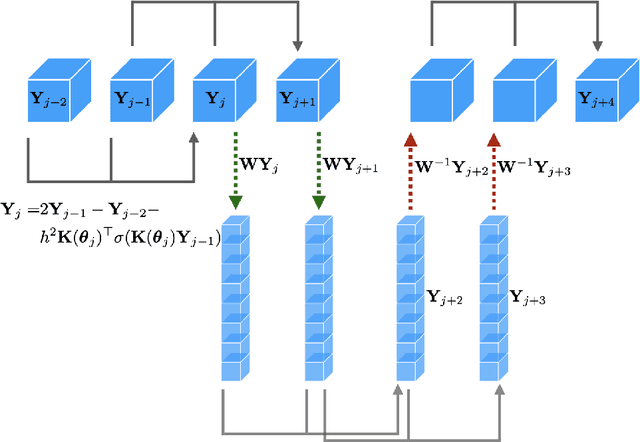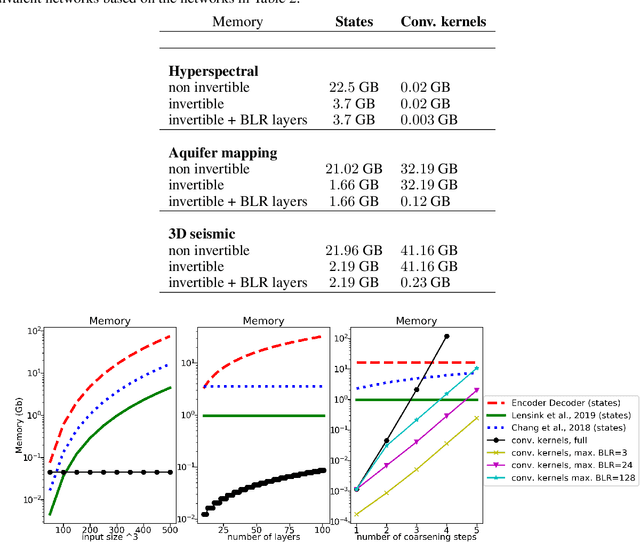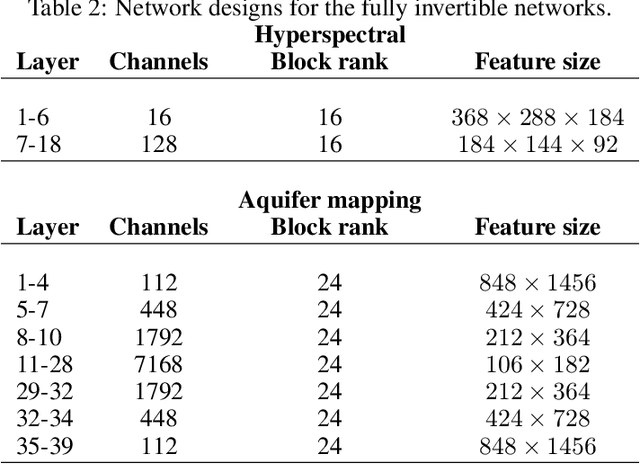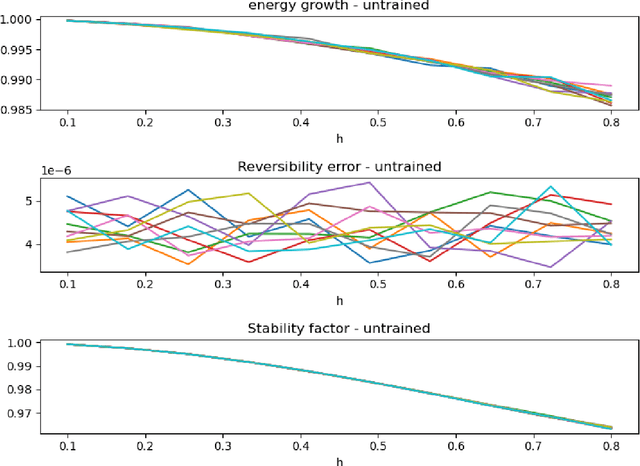Fully invertible hyperbolic neural networks for segmenting large-scale surface and sub-surface data
Paper and Code
Jun 30, 2024



The large spatial/temporal/frequency scale of geoscience and remote-sensing datasets causes memory issues when using convolutional neural networks for (sub-) surface data segmentation. Recently developed fully reversible or fully invertible networks can mostly avoid memory limitations by recomputing the states during the backward pass through the network. This results in a low and fixed memory requirement for storing network states, as opposed to the typical linear memory growth with network depth. This work focuses on a fully invertible network based on the telegraph equation. While reversibility saves the major amount of memory used in deep networks by the data, the convolutional kernels can take up most memory if fully invertible networks contain multiple invertible pooling/coarsening layers. We address the explosion of the number of convolutional kernels by combining fully invertible networks with layers that contain the convolutional kernels in a compressed form directly. A second challenge is that invertible networks output a tensor the same size as its input. This property prevents the straightforward application of invertible networks to applications that map between different input-output dimensions, need to map to outputs with more channels than present in the input data, or desire outputs that decrease/increase the resolution compared to the input data. However, we show that by employing invertible networks in a non-standard fashion, we can still use them for these tasks. Examples in hyperspectral land-use classification, airborne geophysical surveying, and seismic imaging illustrate that we can input large data volumes in one chunk and do not need to work on small patches, use dimensionality reduction, or employ methods that classify a patch to a single central pixel.
 Add to Chrome
Add to Chrome Add to Firefox
Add to Firefox Add to Edge
Add to Edge